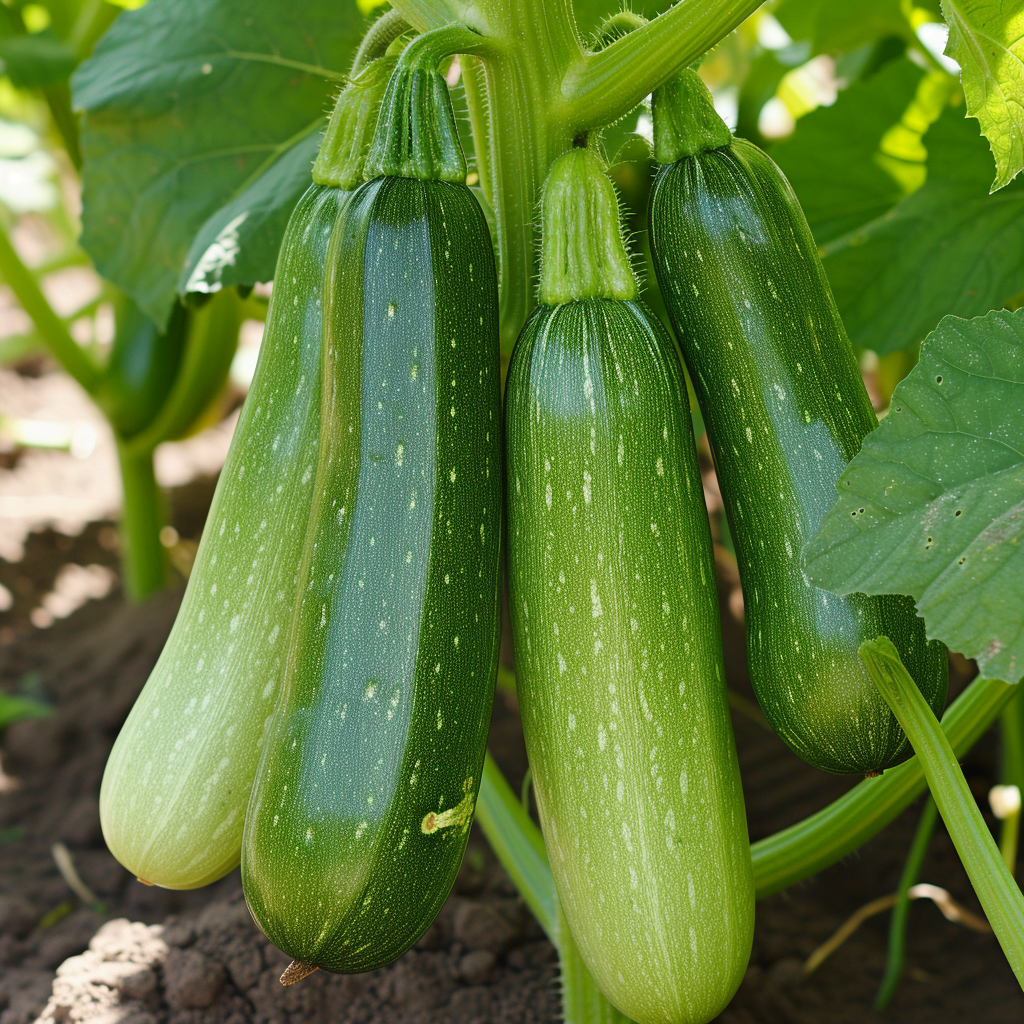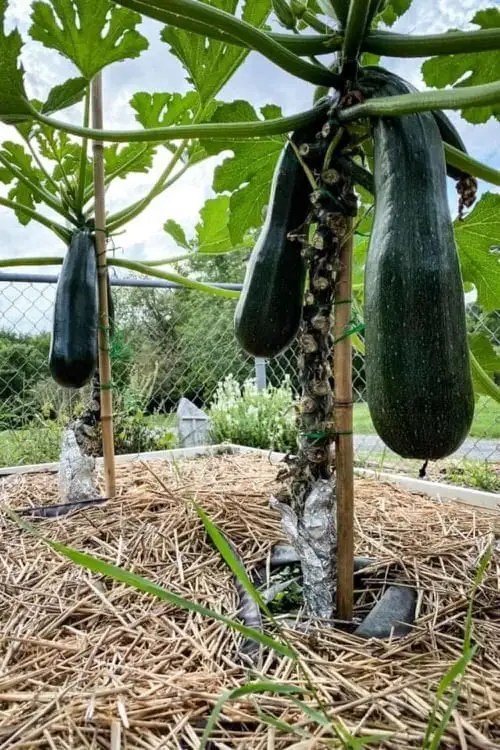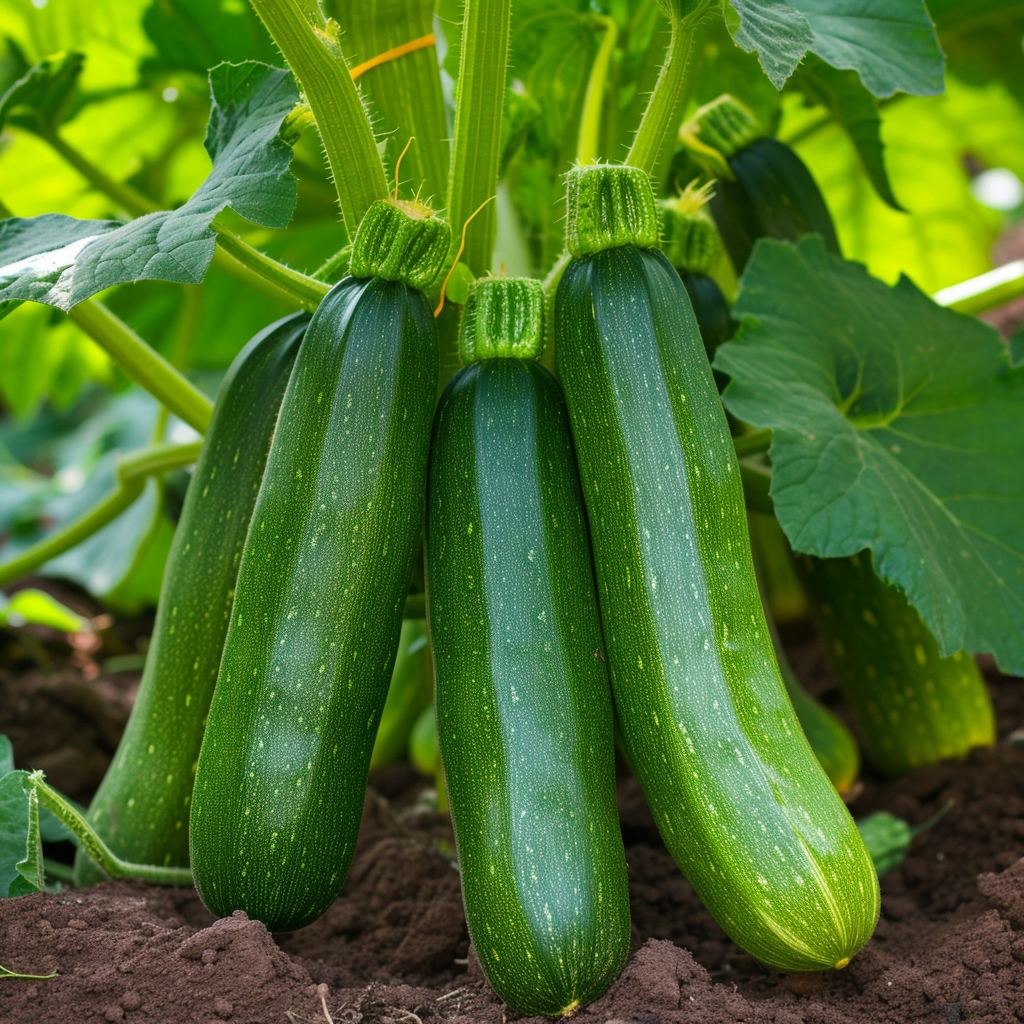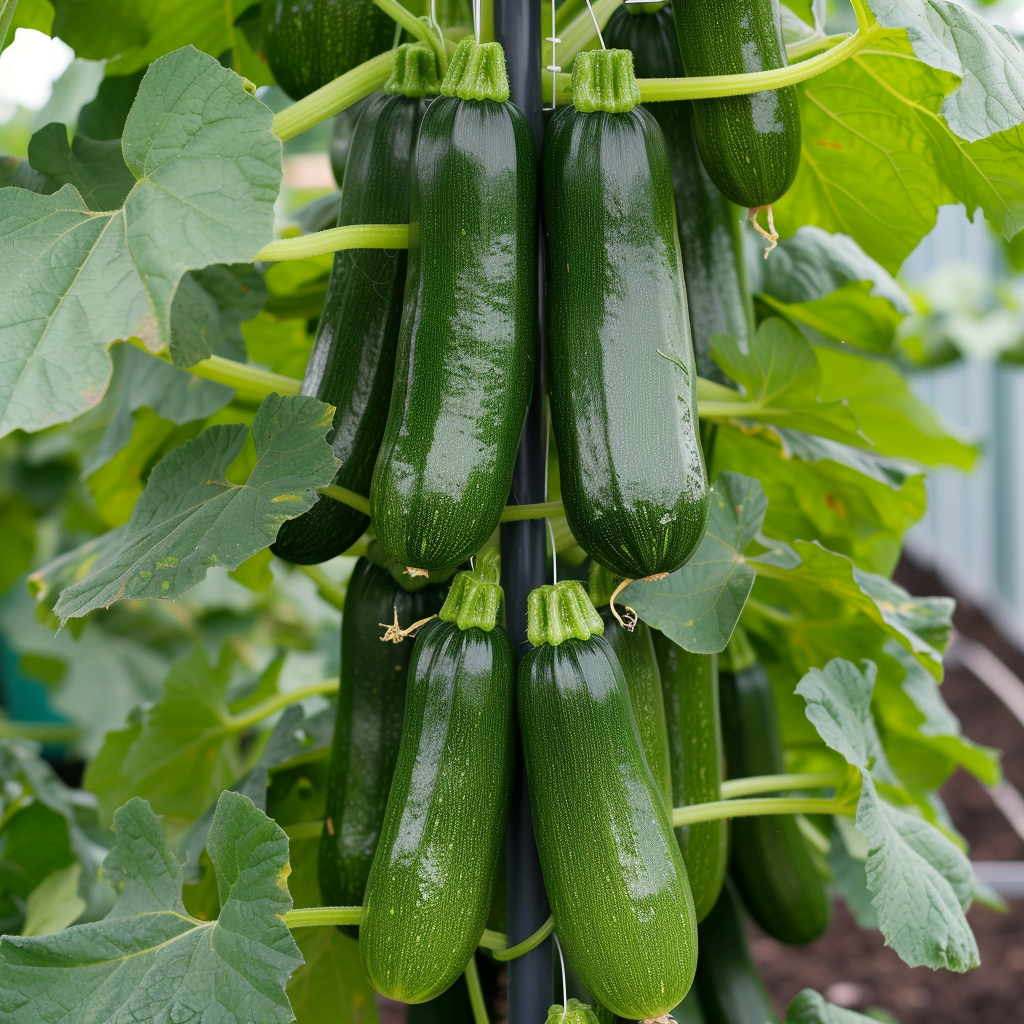You’ve always wanted to try your hand at gardening, and what better way to start than with zucchini plants? In this guide, we’ll show you how to grow zucchini plants vertically, allowing you to maximize your space and harvest a bountiful crop. Say goodbye to sprawling vines and hello to a more organized and efficient garden. Whether you have limited space or simply want to try something new, growing zucchini plants vertically is a game-changer that will have you enjoying fresh zucchinis in no time. Let’s get started!
Choosing the Right Varieties
When it comes to growing zucchini plants vertically, choosing the right variety is crucial. Different zucchini varieties have varying growth habits and requirements, and selecting the most suitable ones can significantly ease the vertical growing process.
Determining the Space Available
Before selecting zucchini varieties, it’s important to assess the available space for vertical growth. Consider the height and width of the area where you plan to grow your zucchini plants. Make sure you have enough vertical space for the plants to grow without hindrance.
Considering Climatic Conditions
Another factor to consider is the climatic conditions in your region. Some zucchini varieties are better suited for cooler climates, while others thrive in warmer regions. Choose varieties that are known to perform well in your specific climate to maximize your chances of success.
Selecting Suitable Zucchini Varieties
When it comes to vertical zucchini gardening, compact and bushy varieties are often the best choices. Look for varieties that have a more upright growth habit rather than those that tend to sprawl. Some popular varieties for vertical growing include ‘Patio Star,’ ‘Bush Baby,’ and ‘Eight Ball.’

Preparing the Vertical Growing Space
Creating an optimal vertical growing space for your zucchini plants is essential for their health and productivity. Follow these steps to prepare the area for vertical growth.
Clearing the Area
Start by clearing any debris, weeds, or existing plants from the designated area. Ensure that there are no competing plants nearby that can hinder the growth of your zucchini plants. This will provide a clean slate for your vertical zucchini garden.
Optimizing Soil Conditions
Once the area is cleared, it’s time to focus on optimizing the soil conditions. Zucchini plants thrive in well-draining soil that is rich in organic matter. Test the soil pH and nutrient levels and make any necessary amendments to ensure the soil is balanced and fertile for optimal plant growth.
Building Supports for Vertical Growth
Next, construct the supports that will facilitate the vertical growth of your zucchini plants. Options for vertical support include trellises, stakes, or cages. Make sure the supports are sturdy enough to hold the weight of the growing zucchini plants and allow them to climb or be tied up as they grow.

Starting Zucchini Seeds
Before you can begin vertical gardening with zucchini, you need to start with healthy seedlings. Follow these steps to get your zucchini plants off to a great start.
Determining the Ideal Time
The ideal time to start zucchini seeds depends on your climate and the specific variety you are growing. Zucchini is a warm-season crop, so wait until all frost has passed in your area before starting seeds. Generally, zucchini seeds can be started indoors 4-6 weeks before the last expected frost date.
Preparing Seed Pots or Trays
Fill seed pots or trays with a well-draining seed starting mix. Moisten the mix before planting the seeds to provide optimal conditions for germination. Plant the seeds according to the package instructions, usually 1 inch deep and 2-3 inches apart.
Planting and Caring for Seedlings
Place the seed pots or trays in a warm location, ideally around 70-85°F (21-29°C). Provide adequate light, either by placing them near a sunny window or using grow lights. Keep the soil consistently moist but not waterlogged. Once the seedlings develop their first true leaves, it’s time to transplant them into larger pots or directly into the garden.
Transplanting Seedlings
Once your zucchini seedlings are strong and ready, it’s time to transplant them into their vertical garden. Follow these steps to ensure a successful transition.
Preparing the Soil
Before transplanting, prepare the soil by loosening it and removing any weeds or debris. Enrich the soil with organic matter, such as compost or well-rotted manure, to provide essential nutrients for your growing zucchini plants.
Digging Proper Planting Holes
Dig planting holes that are large enough to accommodate the root ball of the seedlings. Space the holes according to the recommended spacing for the specific zucchini variety you are growing. Make sure the holes are deep enough to cover the root ball completely, up to the base of the seedling’s stem.
Transplanting Seedlings Carefully
Gently remove the zucchini seedlings from their pots or trays, being careful not to damage the delicate roots. Place each seedling in a planting hole and fill in the soil around it, firming it gently to ensure good soil-to-root contact. Water the transplanted seedlings thoroughly to settle the soil.
Training Zucchini Plants
To effectively grow zucchini vertically, it’s important to understand the growth pattern of the vines and provide adequate support. Follow these steps to train your zucchini plants for vertical growth.
Understanding the Vine Growth Pattern
Zucchini plants are vigorous climbers, but they need guidance and support to grow vertically. The main vine of the zucchini plant will need a strong support system, while the lateral branches can be tied to the main support or trellis.
Providing Initial Support
As the zucchini plants start to grow, gently tie the main vine to the support system using garden twine or soft plant ties. This will keep the vine upright and prevent it from trailing on the ground. Make sure the ties are not too tight to allow for growth but secure enough to provide support.
Using Ties and Trellis Systems
As the zucchini plants continue to grow, use additional ties or a trellis system to support the lateral branches. Secure the branches to the trellis framework using garden twine or soft ties. Regularly check and adjust the ties as the plants grow to ensure they remain in an upright position.
Maintaining Vertical Zucchini Plants
To ensure healthy and productive zucchini plants, proper maintenance is crucial. Pay attention to the following aspects to keep your vertical zucchini garden thriving.
Watering Requirements
Zucchini plants require consistent moisture to thrive, especially during hot and dry periods. Water deeply but infrequently to promote deep root growth. Aim to provide around 1-2 inches of water per week, either through irrigation or rainfall. Avoid overhead watering, as wet foliage can encourage disease development.
Fertilization and Nutrient Management
Regular fertilization is essential to provide zucchini plants with the necessary nutrients. Use a balanced fertilizer or organic compost to feed the plants every 2-3 weeks. Monitor the plants for any signs of nutrient deficiencies, such as yellowing leaves, and make appropriate adjustments to the fertilizer schedule.
Pruning and Removing Weeds
Regularly prune the zucchini plants to remove any unproductive or damaged branches. This will improve air circulation and prevent the spread of diseases. Additionally, remove any weeds that compete with the zucchini plants for nutrients and water.
Pest and Disease Control
Monitor your vertical zucchini garden for any signs of pests or diseases. Common pests that affect zucchini plants include aphids, squash bugs, and cucumber beetles. Use organic or chemical pest control methods as necessary. Also, be vigilant for any signs of diseases such as powdery mildew or bacterial wilt, and promptly treat them to prevent further damage.

Harvesting Zucchini
Harvesting zucchini at the right time ensures the best flavor and texture. Follow these guidelines for successful zucchini harvests.
Determining the Harvest Time
Zucchini should be harvested when the fruits are still tender and small to ensure optimal taste and texture. Generally, zucchini is ready to harvest when it reaches 6-8 inches in length and has a glossy skin. Avoid waiting too long, as larger zucchinis can become tough and less flavorful.
Harvesting Techniques
To harvest zucchini, use a sharp knife or garden scissors to cut the fruit from the plant. Leave a small portion of the stem attached to the zucchini. Avoid twisting or pulling the fruit, as this can damage the plant. Regularly harvest ripe zucchinis to encourage further production.
Post-Harvest Care
After harvesting, store the zucchinis in a cool and dry place, away from direct sunlight. Avoid washing them until you are ready to use them. Zucchinis can be stored for a few days to a week, depending on their freshness, before they start to lose their quality.
Troubleshooting Common Issues
While vertical zucchini gardening has many benefits, it is not without its challenges. Here are some common issues and how to troubleshoot them.
Stunted Growth
If your zucchini plants are not growing as expected, stunted growth may be a sign of nutrient deficiencies or insufficient sunlight. Ensure that your plants are receiving adequate sunlight and adjust their fertilization schedule accordingly. Consider adding organic matter or appropriate fertilizers to enrich the soil and provide the necessary nutrients.
Flower Drop
If your zucchini plants are flowering but not producing fruits, flower drop may be the issue. Inadequate pollination or stress factors, such as temperature fluctuations, can cause flowers to drop without setting fruits. Encourage pollinators by planting flowers nearby and provide consistent growing conditions to prevent flower drop.
Fruit Diseases
Zucchini plants are susceptible to various fruit diseases, such as blossom end rot or powdery mildew. These diseases can affect both the productivity and quality of your zucchinis. Proper watering, good air circulation, and regular inspection of the plants can help prevent and manage these diseases. Treat affected plants with appropriate organic or chemical treatments as needed.
Pest Infestations
Common pests that infest zucchini plants include aphids, squash bugs, and cucumber beetles. Regularly inspect your plants for signs of pest infestations, such as yellowing leaves or chewed foliage. Implement appropriate pest control measures, such as introducing beneficial insects or using organic or chemical pest control products, to manage the infestations effectively.
Benefits of Vertical Growing
Vertical growing of zucchini plants offers several advantages over traditional horizontal gardening methods. Here are some key benefits to consider.
Space Efficiency
One of the primary benefits of growing zucchini vertically is increased space efficiency. By utilizing vertical supports, you can effectively maximize your garden’s growing area. This is especially beneficial for those with limited space or smaller gardening areas.
Better Air Circulation
Vertical gardening allows for better air circulation around the zucchini plants, reducing the risk of fungal diseases. Enhanced airflow helps to keep the foliage dry, preventing the development and spread of illnesses such as powdery mildew.
Reduced Risk of Soil-borne Diseases
Vertical growing mitigates the risk of soil-borne diseases that can affect zucchini plants. By keeping the foliage and fruits off the ground, you minimize the chances of soil contact and potential infection. This results in healthier plants and higher yield.
Ease of Harvesting and Maintenance
Growing zucchini plants vertically makes it easier to harvest the fruits and perform maintenance tasks. The upright position of the plants allows for clear visibility and better accessibility. Harvesting becomes more efficient, and you can easily tend to the plants, monitor for pests or diseases, and perform necessary pruning or grooming.
Conclusion
Vertical gardening is an excellent method for growing zucchini plants that provides numerous benefits. By selecting suitable varieties, preparing the vertical growing space, starting the seeds properly, and maintaining the plants, you can enjoy a bountiful harvest of delicious zucchinis. Troubleshooting common issues and understanding the advantages of vertical growing will further enhance your gardening experience. Get started on your vertical zucchini garden and enjoy the rewards of this innovative and space-efficient gardening technique.



